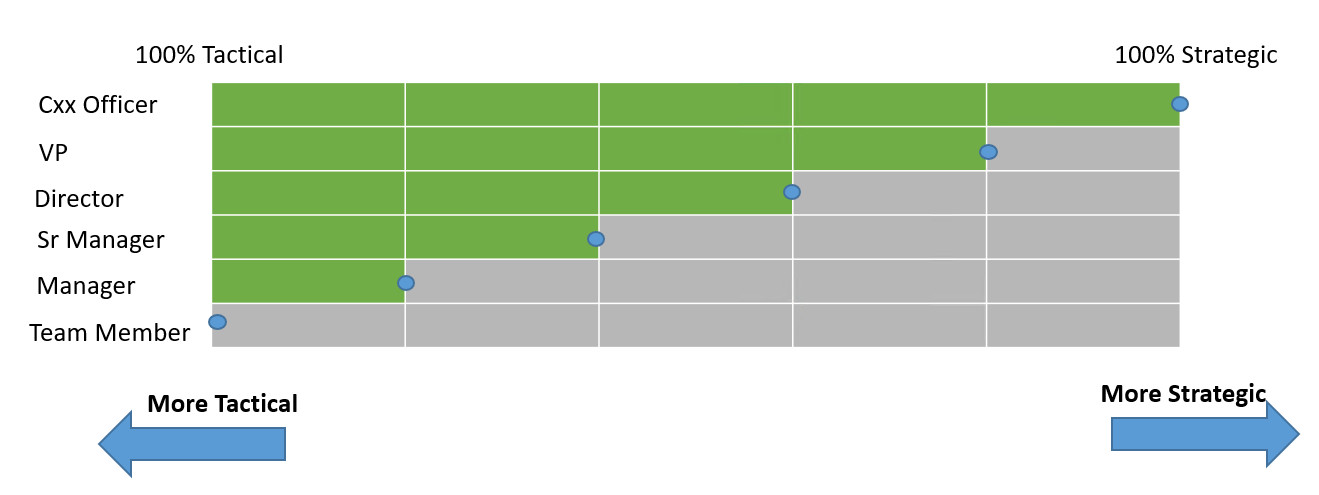Strategy is a big word, often bandied about by managers/leaders as the important work they do vs being in the weeds. In fact, you get to see charts like these below where as they become more senior, the % of work done becomes more strategic compared to tactical or details (or being in the weeds).

The problem with this traditional thinking on formulating organizational strategy is that there is this dichotomy where the people who need to take more important decisions concerning the future of the organization are most isolated from where they need to really be. ie. much closer to the ground and closer to the reality of the situation. A team member will 100% know more about any situation than what has been watered down by countless reports that go up the chain of command.
But I get ahead of myself.
Let’s start with strategy and defining what exactly it is. If you have read my previous blog post on Leadership, you would know the function of a leader is really define the future that cannot be seen yet.
Once that future (or vision) is determined, the plan of action to achieve that vision is really what a strategy is. Said simply:
“Strategy is an intentional set of choices that the organization is going to make (and what it is not going to do) to work towards the vision.”
Here’s the key point about strategy: It is about intentional choices. Cruising along while you react to events is not a strategy. It is just praying and hoping for the best.
The second key point about strategy is that it is clearly about choices. If it is about choices then the most important thing is to figure out what the choices really are.
So the question when working on any strategy is to understand its components
- Understand the vision (or the future)
- Understand your choices
- Making the choices
The dual steps of understanding and making choices need gobs of high-quality information. So the question to ask naturally is whether isolation from day-to-day operational information is really the best way to understand what choices you have.

If you understand the tenets of Systems Thinking (popularized by Ackoff et all), then it is clear that it is impossible trying to optimize parts of a system without understanding the whole and all of it’s interactions. In other words, incomplete or incorrect information regarding parts of a system leads to suboptimal strategies.
If a man wishing to improve his health after learning from his doctor that he is not in good shape, decides to run a marathon, he simply cannot do it the next day. He needs to understand that the parts that comprise his body are nowhere ready and he needs to not only optimize each part but also the whole to have any chance of success. Running a marathon the next day is a choice to improve his health (a futuristic vision) but a poor one.
Translating a futuristic vision into a plan to achieve that seems simple on paper, but is sometimes the most difficult to realize in practice. It is the combination of a vision and the ability to make meaningful and measurable progress toward the vision that makes organizations successful.